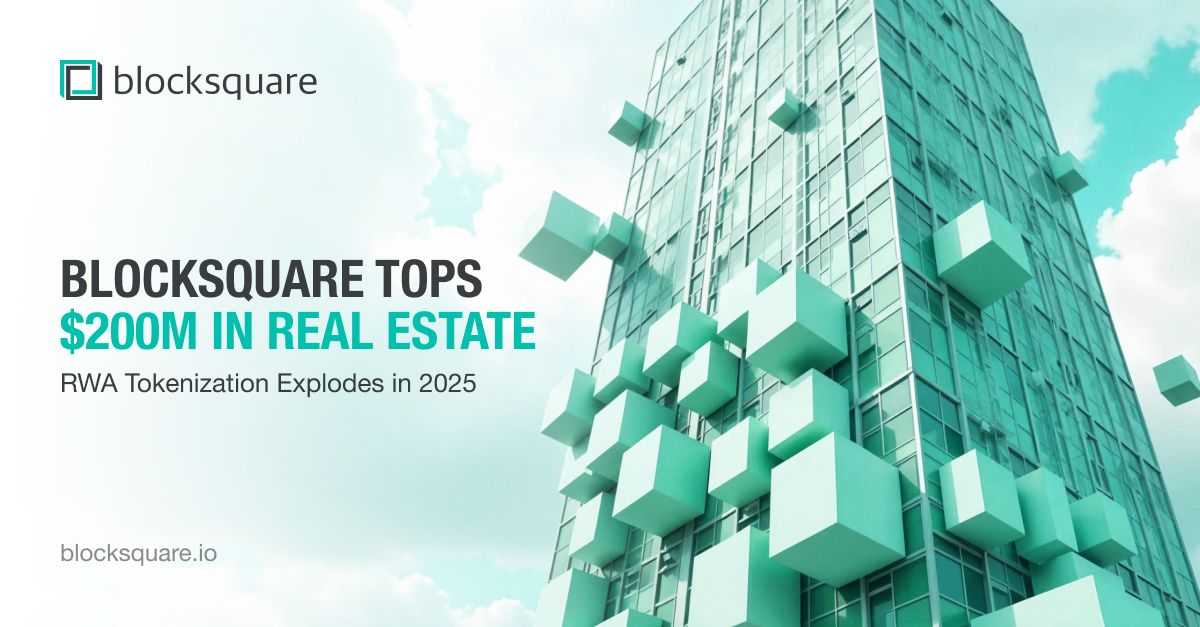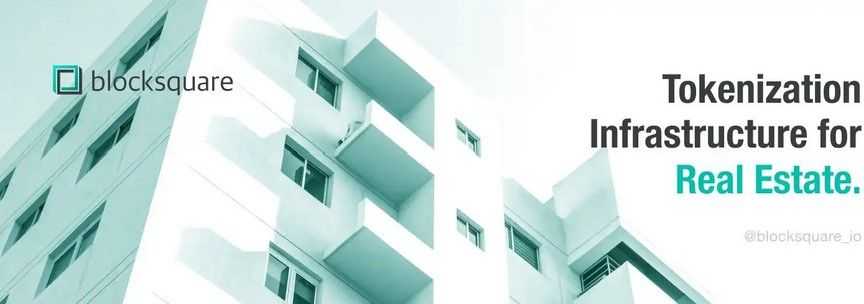RWA Tokenization Explodes in 2025 — Blocksquare Surpasses $200M in Tokenized Real Estate, Fueled by Marketplace Operators
In 2025, one thing has become crystal clear: real-world asset (RWA) tokenization is no longer a trend — it’s a transformation.This year alone, the RWA sector has surged by a staggering 800%, with total value locked (TVL) across tokenized assets surpassing $65 billion, according to a new report by Ainvest. While institutions and regulators race to define their positions in this emerging financial era, one company has quietly and consistently executed real-world impact: Blocksquare.


And now, Blocksquare has officially hit a major milestone — $200 million in tokenized real estate assets deployed on-chain. This achievement not only marks a new chapter in real estate’s digital evolution but also signals a pivotal shift from pilot projects to real-world platform adoption — with marketplace operators leading the charge.
From Concept to Scale: The Two Phases of Blocksquare’s $200M Journey
To understand the significance of this $200M milestone, you have to zoom out and look at how the industry evolved over the past few years. When Blocksquare began in 2017, tokenizing real estate was still considered experimental. Blockchain technology was promising, but property assets — with their complex legal structures and regulatory implications — seemed out of reach.
Fast-forward to today, and the landscape has shifted dramatically.
Blocksquare’s path to $200 million wasn’t overnight. It unfolded in two distinct phases — each showcasing a different layer of innovation and adoption.
Phase 1: The First $100M — Built Through Pilots, Trading, and Token Staking
The first half of Blocksquare’s $200M milestone was about laying the foundation. This stage was powered largely by pilot projects, secondary market activity, and the DeFi mechanics built into Oceanpoint.fi, Blocksquare’s real estate finance layer.
These early use cases were essential for stress-testing everything from legal frameworks to user interfaces. Properties were tokenized in Europe, traded on secondary markets, and staked by the community to explore revenue-sharing, governance, and fractional ownership mechanics. Token holders could earn rewards, vote on key decisions, and experiment with novel economic models — all backed by real assets, not speculation.
It was during this phase that Blocksquare made headlines for pioneering Europe’s first notarized tokenization, integrating blockchain-based tokens directly with a land registry. This legal innovation set the tone for everything that followed — creating an enforceable, secure bridge between real-world real estate and digital asset ownership.
Phase 2: The Next $100M — Marketplace Operators Take the Lead
While the first $100 million was driven by internal pilots and strategic exploration, the second $100 million tells a very different story.
This growth came from the outside in — driven almost entirely by independent marketplace operators building on Blocksquare’s white-label SaaS infrastructure.
These operators — spanning regions from Latin America to the Middle East to Southeast Asia — are launching their own tokenized property marketplaces under their own brands, using Blocksquare's compliance-ready framework to do so efficiently, affordably, and legally. They source the properties, onboard property owners, manage community engagement, and oversee staking and token sales.
The best part? Many of these operators don’t even own the properties themselves. Like agencies or listing platforms, they act as facilitators, connecting sellers of tokenized real estate with buyers in Web3 and beyond.
The impact of this model is powerful. Instead of one centralized platform trying to tokenize the world, Blocksquare has enabled dozens of decentralized platforms to emerge — each serving local markets with global reach.
Why This Model Works: The Infrastructure Behind the Growth
So how exactly did Blocksquare go from experimentation to exponential growth?
The answer lies in its architecture — a blend of legal clarity, technical flexibility, and economic incentives that appeals to both Web3 natives and traditional real estate professionals.
At the core is a unique token structure. Instead of tokenizing equity (which often triggers securities regulation), Blocksquare tokenizes economic rights. These tokens are backed by corporate resolutions and legally binding agreements that give holders a share in revenues (like rent) and future equity at sale — all without being classified as a traditional security in many jurisdictions.
This subtle but powerful innovation makes the model scalable. It allows tokens to reflect real-world value while staying lean and compliant across borders.
Further, Blocksquare’s integration with the European Union’s MiCAR regulation and its Luxembourg-based legal entity give it regulatory alignment — something many newer platforms are still scrambling to achieve.
Then there’s Oceanpoint, the DeFi layer that adds liquidity, rewards, and governance to the equation. Oceanpoint allows users to stake BST (Blocksquare Token), earn incentives, and participate in platform development through sBST — its governance token. And it gives marketplace operators access to Marketplace Pools, where they can activate their project with up to 100% discounts on infrastructure costs — in exchange for long-term staking support from the community.
The result is a truly symbiotic ecosystem where property owners, platform operators, investors, and the protocol itself are all aligned.
$200M Isn’t the Finish Line — It’s the Launchpad
What makes this milestone more exciting is that it’s just the beginning.
In Q2 2025, Blocksquare partnered with Vera Capital to launch a $1 billion tokenization initiative focused on U.S. real estate. This project aims to bring tokenized ownership to institutional-grade properties — think multifamily developments, medical buildings, and urban commercial spaces — giving global investors fractional access to real estate assets that were once out of reach.
At the same time, the ecosystem continues to grow in other directions. Operators are launching niche marketplaces focused on sustainability, wellness tourism, student housing, industrial logistics, and even land lease communities. The use cases are expanding, and the community is maturing.
Every new tokenized property, every new marketplace, every new stakeholder — they’re all helping to reshape how the world interacts with real estate.
What You Can Do Next (Whether You're an Investor, Builder, or Just Curious)
If you’ve been sitting on the sidelines, watching tokenization evolve, now is the time to get involved.
Here’s how you can take action:
👉 Browse live tokenized deals on Oceanpoint Marketplace
👉 Launch your own marketplace by applying at Blocksquare.io
👉 Join the Oceanpoint community and stake BST to support the next generation of operators
Real estate is being rebuilt — not with concrete and cranes, but with code, compliance, and community. And with $200 million tokenized and counting, Blocksquare is proving that the infrastructure works, the demand is real, and the opportunity is only getting bigger.
Final Thought
Real estate is the largest asset class in the world — yet it’s been one of the least accessible.
Tokenization changes that. It removes friction. It creates liquidity. It opens doors.
And thanks to platforms like Blocksquare, the future of real estate looks borderless, fractional, transparent — and finally, inclusive.
